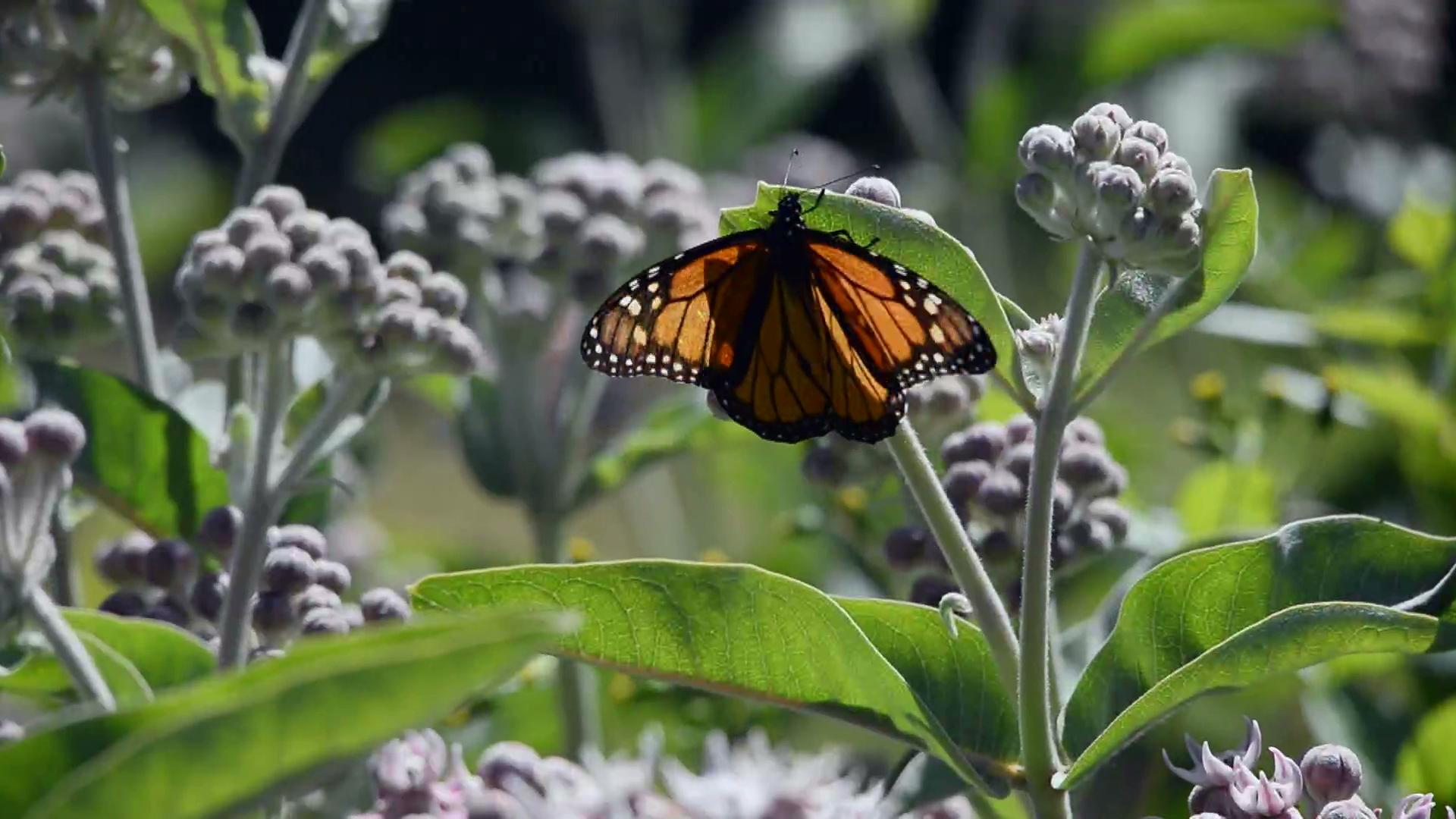
Monarch butterflies lay their eggs exclusively on milkweed plants.
Courtesy: Stephanie Hazen.
It’s September, the month when monarch butterflies are at their peak in the Pacific Northwest.
These are western monarchs, not the eastern monarchs that spend their winters in Mexico. Western monarchs breed in Washington, Oregon, Idaho, and eight other states and then migrate to their winter home in California.
New research shows these monarchs are disappearing even faster than their eastern cousins. Scientists are trying to figure out why.
Since 1997, volunteers have spent their Thanksgivings counting clusters of monarch butterflies in the coastal groves of California. Every year, there are more volunteers and fewer butterflies.
Cheryl Schultz, a conservation biologist at Washington State University in Vancouver, and her team used the Thanksgiving data along with even earlier counts to estimate western monarch populations.
They found there were about 10 million western monarchs in the 1980s; today there are 300,000. That’s a 97 percent decline.
“We were surprised and of course somewhat saddened by how steep the decline is,” Schultz says.
That said, she adds, “instead of being depressed about their numbers, we should take this as a warning call, as an alarm that we need to wake up and do something.”
Beth Waterbury, a wildlife biologist at the Idaho Department of Fish and Game, says a number of factors could be contributing to the decline, including habitat loss and pesticide use.
Also, migrating monarchs depend on blooming flowers for nectar, and climate change-fueled droughts have shortened the time that flowers are in bloom.
“A lot of work going forward is going to be protecting areas where we have native milkweeds and protecting areas where we have good wildflower populations on the landscape,” Waterbury says, by working with public lands agencies, farmers, conservation groups, and gardeners.
And, she adds, it might also be necessary “to restore and create new pollinator-type habitat.” Since researchers aren’t exactly sure where the western monarchs’ migration pathway is, it’s hard to know where to concentrate flower-planting efforts.
“The scale of conservation actions that needs to happen for the species is pretty massive,” Waterbury concludes.
Schultz is nonetheless hopeful. She points to successful efforts to recover the Fender’s blue butterfly in Oregon, saying, “I think there’s a potential to recover this butterfly across the West.”

